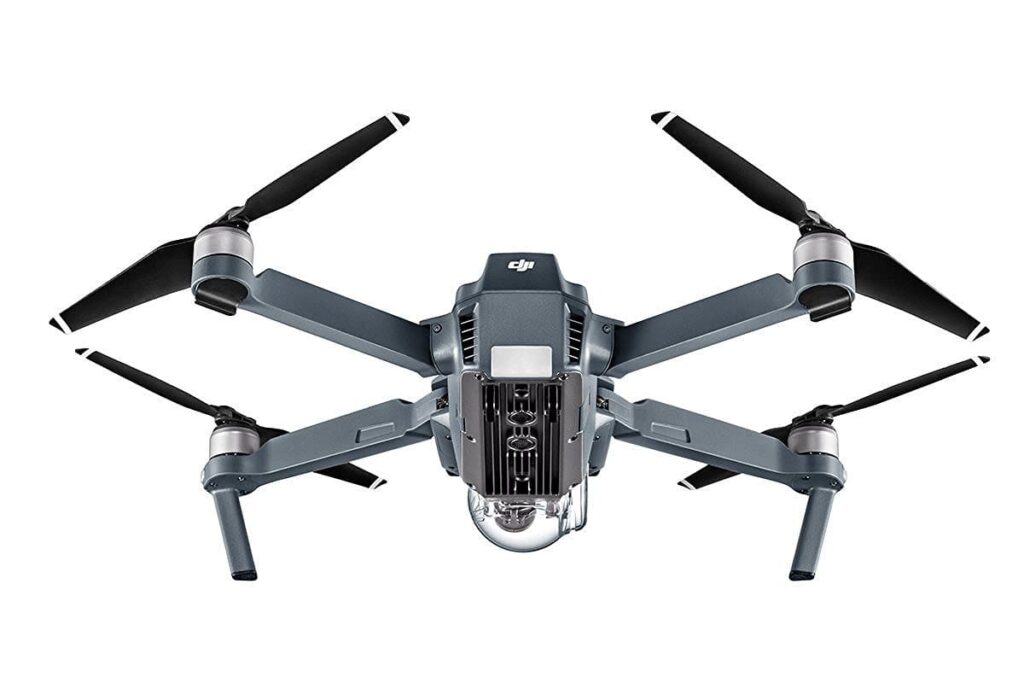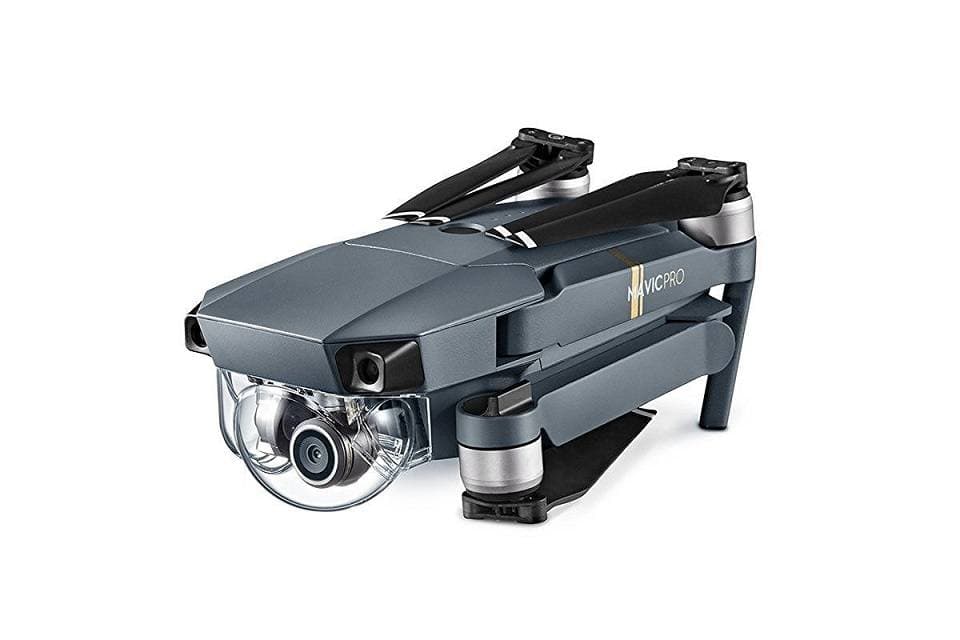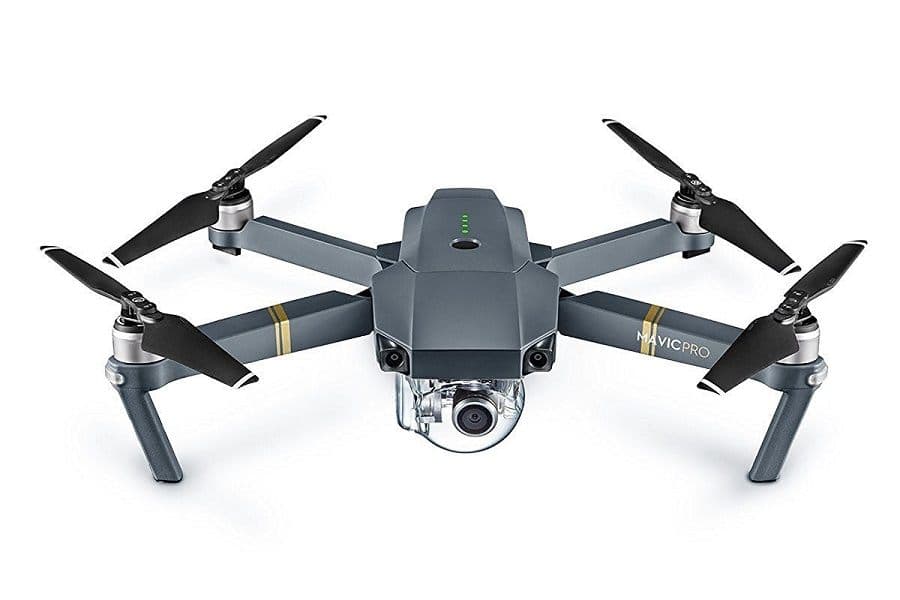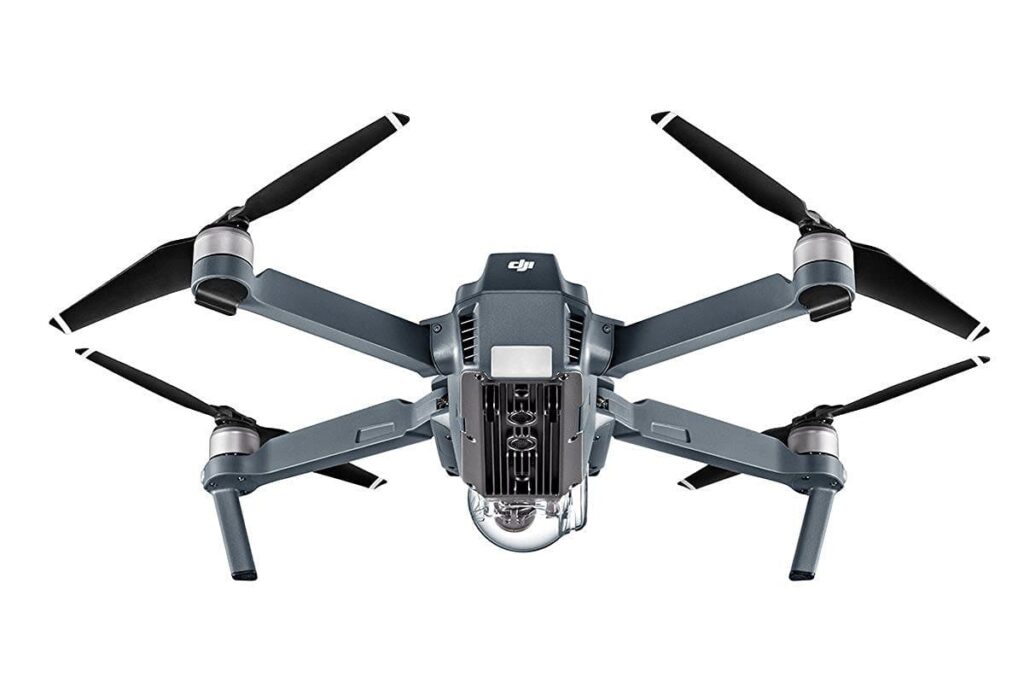DJI Mavic Pro – compact 4K drone
The DJI Mavic Pro is the newest and at the same time most innovative drone from the house of DJI and comes up with a variety of interesting innovations. The small but incredibly powerful drone from the Chinese manufacturer DJI combines the latest technology with unimagined comfort – and that in a very small space.
A real highlight of the DJI Mavic Pro are its dimensions. At just 8.3 cm high and wide and 19.8 cm long, the Mavic Pro can be conveniently stowed almost anywhere in transport mode. The weight of 743 grams is also less than most other comparable multicopters. The foldable drone is therefore also perfect as a travel companion on the road.
However, the compact dimensions should not hide the inner workings of the Mavic Pro. The small quadrocopter comes with a lot of technology.
A mechanical 3-axis gimbal with 4K camera, a completely revised transmission system with a range of 4.3 miles (7 km)*, ultrasonic sensors for position detection and many flight modes make the Mavic Pro a highly interesting complete package.
Depending on the flight modes, the DJI Mavic Pro manages between 20 and 25 minutes of flight time per battery charge. The included 3830 mAh 3S (11.4 V) LiPo battery has an LED bar to indicate the battery level. For even longer flight times, we recommend purchasing an additional battery for the DJI Mavic Pro to provide up to another 25 minutes of flight time.
*Please comply with applicable regulations and laws.
Control and operation of the DJI Mavic Pro
The newly designed controller of the copter is reminiscent of a gamepad and can be conveniently folded for transport, similar to the drone itself. A smartphone can be attached to a holder on the controller and, in addition to the alternative control of the Mavic Pro via DJI Go App, also allows the display of the FPV image (live image of the camera).
The quadcopter can be controlled and operated either with the controller only, with smartphone and controller or with the smartphone only. All important functions such as photo and video recording as well as setting the flight modes are of course also available on the smartphone.
The controller can be switched to sport mode at the touch of a button. Here, the DJI Mavic Pro achieves a full 40 mph (65 km/h) and is almost reminiscent of an FPV racing drone. The so-called tripod mode is also completely new. With this setting, the copter glides across the sky at a maximum of 2.2 mph (3.6 km/h) and is extremely stable in the air. The excellent sensor technology of the Mavic Pro ensures an extremely smooth flight attitude and makes landscape photography possible without any problems. The tripod mode is also ideal for indoor operation. The sophisticated sensor technology of the DJI Mavic Pro lets you control the copter even without GPS reception and thus enables use inside buildings.

Camera and gimbal of the DJI Mavic Pro
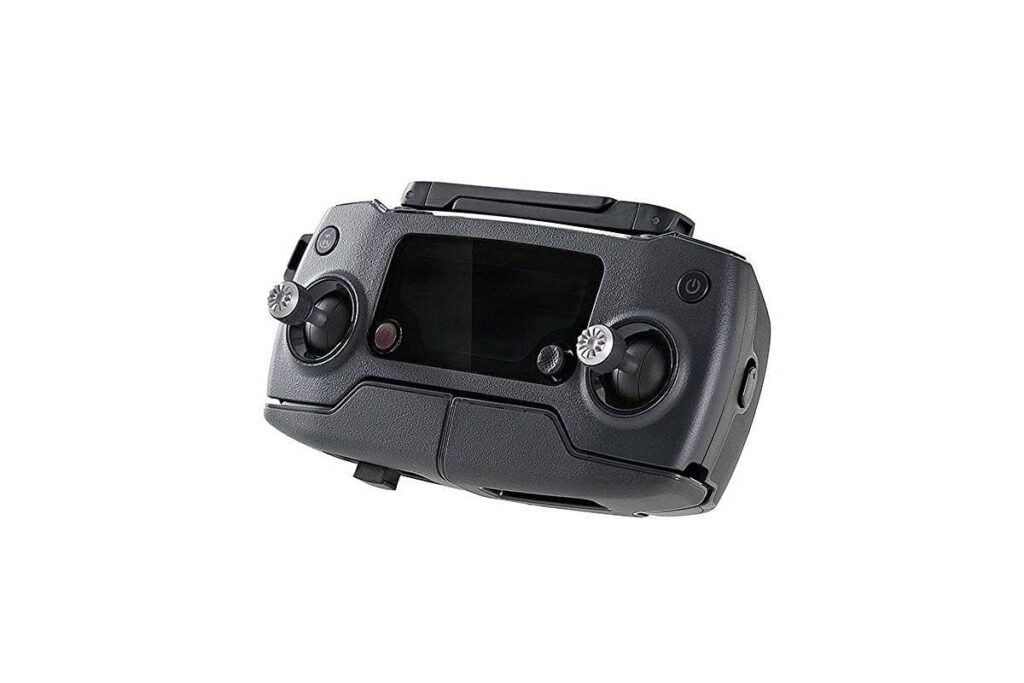
Even though the DJI Mavic Pro is extremely compact, a 4K camera is a must nowadays. Together with the 3-axis gimbal, this creates impressive recordings of the highest quality. While 4K videos are recorded at 30 fps, videos in Full HD can be recorded at up to 120 fps. This way, you can give your videos a slow-motion effect afterwards and thus achieve great effects.
Selfie Drone
Selfie drones are becoming more and more popular. With a selfie drone, you can capture special moments from unique perspectives. The gesture control of the DJI Mavic Pro allows you to do just that. When the Mavic Pro is pointed at at least one person, a simple hand raise is all it takes to trigger a photo.
DJI Mavic Pro: with anti-collision system
The DJI Mavic Pro’s built-in anti-collision system detects obstacles up to 50 feet (15 meters) away and at speeds of up to 22 mph (36 km/h). The copter automatically avoids or stops on its own. This is made possible by a total of four sensors on the front and sides of the DJI Mavic Pro. Unlike other infrared sensors used by other manufacturers, however, this only works without problems in good visibility conditions.
Spectacular shots: The ActiveTrack system
The feature already known from the DJI Phantom 4 has been improved again for the Mavic Pro. Various recording modes are available for a wide range of applications. Whether on foot, on a bike or on the water – the ActiveTrack function tracks and films objects, people and animals from different perspectives.
While the drone records tracking from the front or back in Trace mode, it films subjects from the side in Profile mode. The Spotlight mode is particularly interesting. Here, the Mavic Pro always remains focused on an object, while you can continue to control the copter freely.
Excellent image transmission – DJI OcuSync

The DJI Mavic features a new type of image transmission system between the drone and controller. DJI OcuSync is the logical further development of the well-known DJI Lightbridge technology. In contrast to WiFi transmission, which is standard in many cheaper models, OcuSync technology achieves a much better transmission quality.
The camera’s live image is transmitted with minimal latency (10 to 130 ms) – over distances of up to 4.3 miles (7 km)! Although such a distance is probably not achievable when “flying on sight”, the transmission quality without noticeable image flickering and color fidelity is a real added value that you will probably learn to appreciate quickly.
Conclusion
- The DJI Mavic Pro is a bit outdated, but it is still one of the best drones on the market
- Features, flight characteristics and modes are among the best currently available
- The combination of latest technology, ease of use and compactness sets standards
